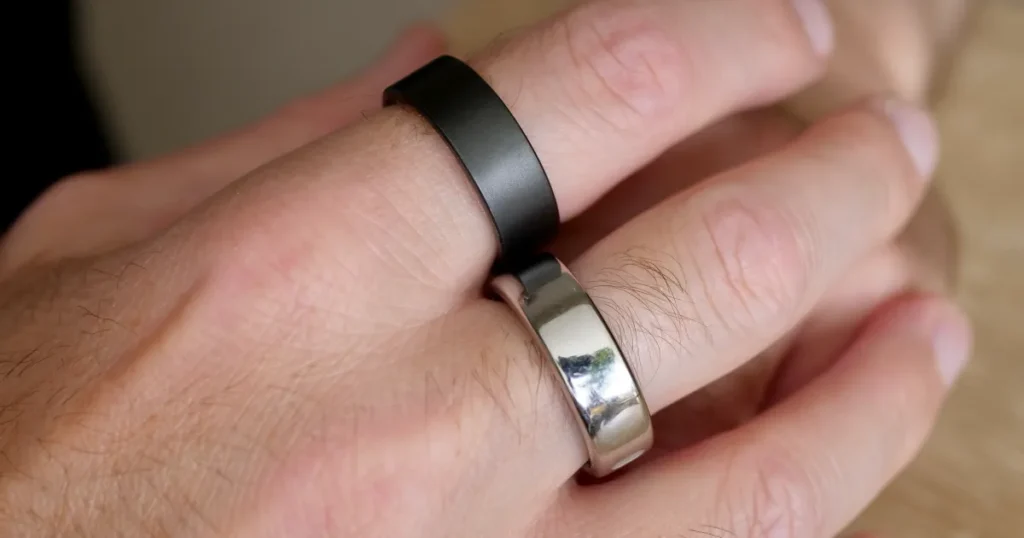I recently had the opportunity to switch from my Oura Ring to a more affordable alternative, and this experience reshaped my view of fitness and wellness rings.
Previously, I wore both an Apple Watch Ultra 2 and a third-generation Oura Ring, which seemed excessive for someone who writes about tech and enjoys experimenting with new gadgets. When offered the chance to try out another smart ring, I eagerly accepted.
The RingConn Smart Ring emerged as a noteworthy competitor, a product I hadn’t encountered until its PR team reached out to me. Despite knowing Digital Trends had already reviewed it earlier, I was intrigued to explore it firsthand and offer my perspective, focusing not on a feature-by-feature comparison with Oura, but on the practicality of switching between these two devices.
Both the Oura Ring and RingConn Smart Ring share many similarities despite their differences. Crafted from lightweight titanium, they both offer a comfortable fit suitable for continuous wear. Oura comes in various finishes compared to RingConn’s squircle design, but both feel equally comfortable on the finger. They boast similar battery life, lasting up to seven days and notifying you via smartphone when charging is needed. Both are water-resistant, safe for everyday activities, although not recommended for prolonged submersion.
Functionality-wise, both excel in tracking essential health metrics such as sleep patterns, daily activities, heart rate variability, and calorie expenditure. Oura goes further with features like body temperature monitoring, blood-oxygen-level tracking, and cardiovascular age assessment. RingConn matches these capabilities with oxygen saturation measurement and robust activity monitoring.
Wearing both rings simultaneously for nearly two weeks, I found little difference in their performance. This consistency reassured me of their reliability in delivering accurate health insights, regardless of the model.
The experience highlighted how easy it is to get caught up in the minutiae of tech product analysis. Initially leaning towards smartwatches for perceived superiority, comparing Oura and RingConn feature-for-feature made me appreciate the unique role of smart rings in everyday health monitoring.
Both Oura and RingConn provide users with a valuable snapshot of their body’s functioning and health trends, packed into a compact, unobtrusive form factor compared to bulkier smartwatches.
The Oura app enriches the experience with detailed analytics, personalized insights, and motivational prompts, all presented in an intuitive interface that simplifies complex health data. RingConn’s app, on the other hand, prioritizes immediate feedback and actionable lifestyle advice, appealing to users seeking proactive health management without delving deeply into data analysis.
While Oura offers a comprehensive experience with advanced features like personalized recommendations and detailed health insights, it comes at a higher cost and requires a subscription for full access. RingConn offers all its features without additional charges, making it a cost-effective alternative for users prioritizing straightforward health monitoring.
Looking ahead, the imminent launch of the Samsung Galaxy Ring promises to further disrupt the smart ring market. Rumored to rival Oura without requiring a subscription, its entry will likely spur innovation and intensify competition among smart ring manufacturers. This dynamic landscape holds promise for consumers, driving advancements in functionality, affordability, and user-centric design.
As I contemplate which smart ring to integrate alongside my Apple Watch, the evolving trajectories of Oura, RingConn, and future contenders like the Samsung Galaxy Ring will influence my decision. Regardless of the outcome, my experience has deepened my appreciation for smart rings and their pivotal role in personal health management.
The emerging smart ring market is poised for growth and refinement, offering consumers more choices and innovations that could reshape how we approach fitness and wellness tracking. I eagerly anticipate the next wave of developments in this space and the positive impact they will bring to users worldwide.
If you like the article please follow on THE UBJ.
